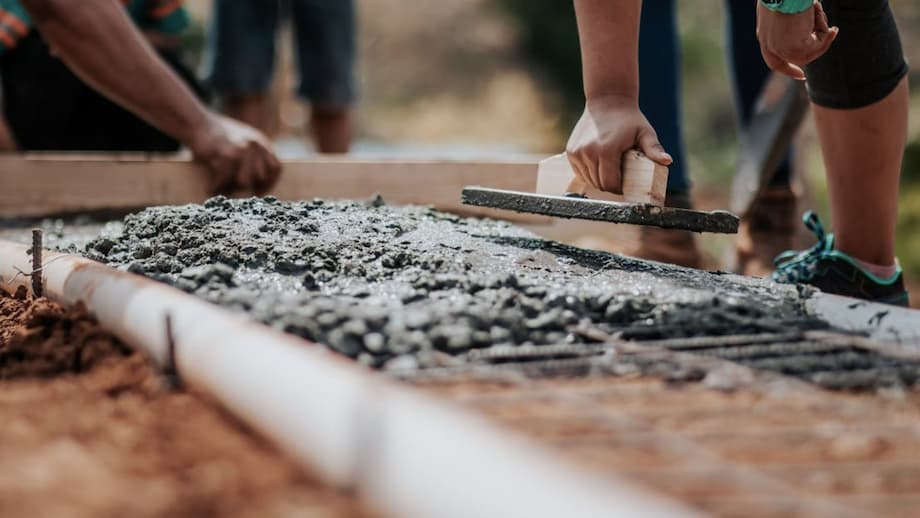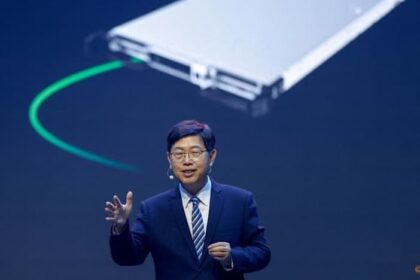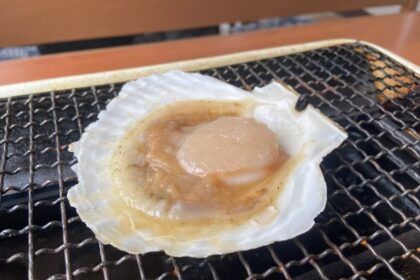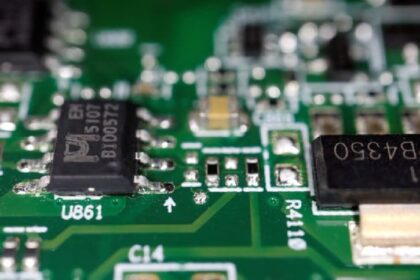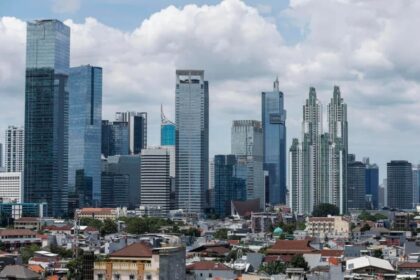China’s Revolutionary Self-Cooling Cement: How It Works and Why It Matters
In a world grappling with rising temperatures, urban heat islands, and soaring energy demands for air conditioning, a team of researchers from Southeast University in China has unveiled a groundbreaking material: self-cooling cement. This innovative cement, engineered to reflect sunlight and radiate heat, promises to keep buildings cooler, reduce energy consumption, and help cities combat climate change. The breakthrough, published in the prestigious journal Science Advances, could transform the way we design and construct urban environments.
- China’s Revolutionary Self-Cooling Cement: How It Works and Why It Matters
- What Makes This Cement Different?
- Performance: Real-World Results and Durability
- Environmental Impact: Toward Net-Negative Carbon Emissions
- Urban Benefits: Energy Savings and Heat Island Mitigation
- Broader Implications: A Pathway to Greener Cities
- In Summary
What Makes This Cement Different?
Traditional cement, the backbone of modern construction, is notorious for absorbing and storing heat from the sun. This not only makes buildings uncomfortably hot but also contributes to the urban heat island effect—a phenomenon where cities become significantly warmer than surrounding rural areas due to dense infrastructure and limited vegetation. The new Chinese-developed cement flips this script by acting as both a mirror and a radiator: it scatters incoming sunlight and emits heat away from its surface, keeping itself and the buildings it covers much cooler.
The secret lies in its unique composition and structure. The cement is engineered with a “metasurface”—a specially designed surface at the microscopic level—created by adjusting the chemical makeup of the cement’s clinker particles and applying pressure during fabrication. This process encourages the self-assembly of tiny, reflective crystals of a mineral called ettringite, along with a network of hierarchical pores. Together, these features give the cement an extraordinary ability to reflect 96.2% of sunlight and emit 96% of its heat as infrared radiation.
How Does Radiative Cooling Work?
Radiative cooling is a passive technology that allows surfaces to shed heat by emitting infrared radiation through the Earth’s atmosphere and out into space. Unlike conventional cooling methods, which require electricity (such as air conditioning), radiative cooling works without any energy input. The new cement leverages this principle by maximizing both its solar reflectance (bouncing sunlight away) and its mid-infrared emissivity (efficiently radiating heat away), resulting in a surface that can stay cooler than the surrounding air—even under direct sunlight.
Performance: Real-World Results and Durability
Field tests have demonstrated the cement’s impressive cooling power. On a hot rooftop at Purdue University in Indiana, the surface temperature of the supercool cement was measured at 5.4°C (9.72°F) lower than the ambient air during peak sunlight, while conventional cement became much hotter. This temperature drop is not just a laboratory curiosity—it translates to real energy savings and improved comfort for building occupants.
Beyond its cooling ability, the cement is robust and versatile. It maintains high strength and abrasion resistance, and it remains stable even after exposure to corrosive liquids, ultraviolet radiation, and freeze-thaw cycles. The material can also be colored for aesthetic purposes without significantly sacrificing its reflective properties, making it suitable for a wide range of architectural applications, from coatings to structural components.
Importantly, the fabrication process is scalable and cost-effective. The cement can be produced at lower temperatures than traditional Portland cement, making it about $5 per tonne cheaper to manufacture. This opens the door for widespread adoption in both new construction and retrofitting existing buildings.
Environmental Impact: Toward Net-Negative Carbon Emissions
The environmental benefits of this self-cooling cement extend far beyond energy savings. Cement production is one of the largest sources of industrial carbon dioxide emissions worldwide, accounting for about 8% of global CO2 output. By reducing the need for air conditioning, the new cement can help cut building energy use—a sector responsible for roughly 40% of global energy consumption and 36% of carbon emissions.
But the innovation goes even further. A machine learning–guided life-cycle assessment conducted by the research team suggests that, when used at scale, the supercool cement could achieve a net-negative carbon emission profile over a building’s lifespan. This means that the carbon savings from reduced energy use could outweigh the emissions generated during the cement’s production, potentially making buildings not just carbon-neutral but carbon-negative.
Comparing Cooling Technologies: Radiative vs. Reflective vs. Evaporative
Passive cooling technologies are gaining attention as cities search for sustainable ways to beat the heat. Three main approaches are commonly used:
- Reflective Cooling: Surfaces are coated with materials that reflect sunlight, reducing heat absorption. While effective, this method does not actively emit heat and can be less effective in extremely hot climates.
- Evaporative Cooling: Uses water evaporation to cool surfaces, but its effectiveness drops in humid conditions and it requires a water source.
- Radiative Cooling: Surfaces emit infrared radiation through the atmospheric window into space, providing cooling even under direct sunlight. The new Chinese cement falls into this category and has been shown to outperform both reflective and evaporative methods in field tests, especially in hot, dry climates.
For example, a comparative study in Chongqing, China, found that radiative cooling surfaces achieved exterior temperatures 2°C below ambient during working hours, outperforming both reflective and evaporative cooling technologies.
Urban Benefits: Energy Savings and Heat Island Mitigation
Applying self-cooling cement to roofs and walls in urban environments could yield substantial benefits:
- Reduced Energy Bills: By keeping buildings cooler, the need for air conditioning drops, leading to significant electricity savings. Studies estimate that super-cool roofs can save between 42.9 and 97.8 kWh per square meter per year in cooling electricity.
- Lower Carbon Emissions: Less energy use translates directly to lower greenhouse gas emissions. Super-cool roofs can reduce carbon emissions by 24.6 to 56.1 kilograms per square meter per year.
- Improved Urban Comfort: Cooler buildings mean more comfortable indoor environments and less heat radiated into city streets, helping to mitigate the urban heat island effect.
- Economic Feasibility: The incremental cost of installing super-cool roofs is offset by energy savings, with payback periods as short as five years in hot cities.
These benefits are especially important as global warming drives more frequent and severe heatwaves, putting additional strain on urban infrastructure and public health systems.
Challenges and Considerations for Large-Scale Adoption
While the promise of self-cooling cement is immense, experts caution that its real-world performance will depend on several factors:
- Climate and Geography: Radiative cooling works best in dry, clear-sky regions where the atmosphere is transparent to infrared radiation. Its effectiveness can be reduced in humid or polluted environments.
- Urban Design: Large-scale adoption could alter local wind patterns, light pollution, and pollutant accumulation. Careful urban planning is needed to maximize benefits and minimize unintended consequences.
- Material Aging: Over time, dust, dirt, and weathering can reduce the reflective and emissive properties of cool roof materials. Ongoing maintenance and material improvements will be necessary.
Despite these challenges, the consensus among researchers is that super-cool cement represents a major step forward in sustainable building technology. As Oscar Brousse, a building scientist at University College London, notes:
“The material increases both reflectivity and emissivity, so any energy captured or conducted to the material is emitted efficiently back. However, further testing is needed to fully understand its long-term performance in real-world conditions.”
Broader Implications: A Pathway to Greener Cities
The development of self-cooling cement is part of a broader movement toward passive cooling and energy-efficient urban design. Advances in nanophotonics and metamaterials have enabled the creation of super-cool and temperature-adaptive roofs, which can maintain surface temperatures below ambient air temperature under direct sunlight. These technologies not only reduce building cooling loads and CO2 emissions but also improve urban air quality and resilience to climate change.
In China, where rapid urbanization and industrialization have driven up both energy use and emissions, the adoption of super-cool cement could play a pivotal role in achieving national carbon neutrality goals. The technology is also relevant for cities worldwide, especially those facing extreme heat and high energy costs.
As cities continue to grow and climate challenges intensify, innovations like self-cooling cement offer a glimpse of a more sustainable, comfortable, and resilient urban future.
In Summary
- Chinese researchers have developed a self-cooling cement that reflects sunlight and emits heat, keeping buildings cooler without air conditioning.
- The cement achieves a surface temperature drop of up to 5.4°C (9.72°F) under strong sunlight, thanks to its engineered metasurface and reflective ettringite crystals.
- It is durable, cost-effective, and can be produced at scale, making it suitable for widespread use in roofs, walls, and coatings.
- Life-cycle analysis suggests the cement could enable buildings to achieve net-negative carbon emissions by reducing energy use for cooling.
- Radiative cooling technologies like this cement outperform traditional reflective and evaporative cooling methods, especially in hot, dry climates.
- Large-scale adoption could help cities save energy, lower emissions, and mitigate the urban heat island effect, but real-world performance will depend on climate, urban design, and material durability.
- The breakthrough represents a significant step toward sustainable, energy-efficient urban environments worldwide.


